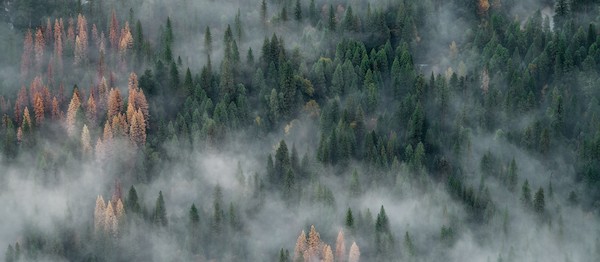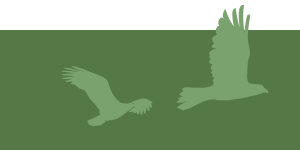
BIRDS AND FOREST MANAGEMENT

How do forest management actions like timber harvest, forest thinning, controlled burning, and active reforestation affect birds, and how can they be made more compatible with conservation of sensitive bird populations? Those are the main questions motivating IBP’s studies of birds and forest management in the Sierra Nevada and beyond, and they are particularly critical as land managers face enormous pressure to increase the pace and scale of forest management activities that may help protect mountain towns from wildfire.
Much of IBP’s work in this area is conducted in partnership with the US Forest Service, the National Park Service and other Sierra Nevada land managers. Recent and going examples include surveys of birds and insect pollinators 20 years after the implementation of experimental forest thinning and prescribed fire treatments; occupancy and reproductive status surveys of Spotted Owls and Northern Goshawks to ensure they can be protected during forest thinning efforts; development of analytical tools to help forest managers incorporate Black-backed Woodpecker habitat needs into post-fire timber harvest planning; and a study of vulnerabilities in the mutualism between whitebark pine and Clark’s Nutcrackers.

Photo credits: top left: John Towner; bottom left: Frank Lospalluto; top right: Andy Witchger.
GOSHAWKS NEED ROOM TO ROAM

On US Forest Service lands in California, the management strategy for goshawks relies on "Protected Activity Centers" or PACs, essentially an 81-hectare bubble around a known or suspected Northern Goshawk nest, within which timber harvest or other habitat-altering activities are limited to avoid disturbing the birds. But is 81 hectares, or about 200 acres, enough room for a goshawk to roam?
That's one of the things the Forest Service wanted to know when it asked IBP to study the birds’ movements and space usage throughout their forest habitat. The result is a study, published in the Journal of Raptor Research, using GPS transmitters to track the movements of Northern Goshawks in the Plumas National Forest in California. We used this data to estimate home range size and distance traveled by individual goshawks, and evaluated how much of the habitat that the birds used was protected by PACs.
We found that PACs in the Plumas National Forest are unlikely to protect more than 25% of the habitat used by goshawks during the nesting season. However, that 25% typically contains the nest and therefore probably protects the most sensitive portion of each goshawk pair’s haunts. But is that sufficient? More information is needed on how forest management practices in the Sierra Nevada region affect Northern Goshawks, especially at landscape scales.
SELECTED PUBLICATIONS
Peer-reviewed Publications
Stillman, A.N., R.L. Wilkerson, D.R. Kaschube, R.B. Siegel, S.C. Sawyer, and M.W. Tingley. 2023. Incorporating pyrodiversity into wildlife habitat assessments for rapid post-fire management: a woodpecker case study. Ecological Applications 2023:e2853. PDF
Siegel, R. and R. Wilkerson. 2022. A giant loss: losing sequoias could be a blow to Sierra Nevada Birds. The Wildlife Professional 16:54-55. PDF
Loverin, J.K., A.N. Stillman, R.B. Siegel, R.L. Wilkerson, M. Johnson, and M.W. Tingley. 2021. Nestling provisioning behavior of Black-backed Woodpeckers in post-fire forest. The Journal of Field Ornithology 92:273-283. PDF
Stillman, A.N., T.J. Lorenz, R.B. Siegel, R.L. Wilkerson, M. Johnson, and M.W. Tingley. 2021. Conditional natal dispersal provides a mechanism for populations tracking resource pulses after fire. Behavioral Ecology 2021:1-10. PDF
Schofield, L.N., S.A. Eyes, R.B. Siegel, and S.L. Stock. 2020. Habitat selection by spotted owls after a megafire in Yosemite National Park. Forest Ecology and Management 478:118511. PDF
Blakey, R.V., R.B. Siegel, E.B. Webb, C.P. Dillingham, R.L. Bauer, M. Johnson, and D.C. Kesler. 2019. Space use, forays, and habitat selection by California Spotted Owls (Strix occidentalis occidentalis) during the breeding season: new insights from high resolution GPS tracking. Forest Ecology and Management 432:912-922. For a copy of this publication, please contact Rodney Siegel.
Bond, M.L., D.E. Lee, R.B. Siegel, and M.W. Tingley. 2013. Diet and home range size of California Spotted Owls in a burned forest. Western Birds 44:114-126. PDF
Lee, D.E., M.L. Bond, and R.B. Siegel. 2012. Dynamics of breeding-season site occupancy of the California Spotted Owl in burned forests. The Condor 114:792-802. PDF
Bond, M.L. D.E. Lee, R.B. Siegel, and J.P. Ward. 2010. Habitat use and selection by California Spotted Owls in a post-fire landscape. The Journal of Wildlife Management 73:1116-1124. PDF
Bond, M.L., D.E. Lee, and R.B. Siegel. 2010. Winter movements by California Spotted Owls in a burned landscape. Western Birds 41:174-180. PDF
Other Publications and Reports
Siegel, R.B., M.W. Tingley, and R.L. Wilkerson. 2022. Black-backed Woodpecker MIS surveys on Sierra Nevada national forests: 2021 annual report. The Institute for Bird Populations, Petaluma, CA. PDF
Schofield, L.N., R.B. Siegel, J.X. Wu, and R.L. Wilkerson. 2015. Avian monitoring in the King Fire: surveying Spotted Owls and Northern Goshawks during the 2015 breeding season. Report to the US Forest Service, Eldorado National Forest. The Institute for Bird Populations, Point Reyes Station, CA.
Siegel R.B., R.C. Kuntz II, R.L. Wilkerson, K.D. Kuhlman, and M.D. Toshack. 2012. Surveying for Spotted Owls in the Upper Skagit watershed of North Cascades National Park Complex, 2009-2010. Natural Resource Technical Report. NPS/NOCA/NRTR—2012/597. National Park Service. Fort Collins, CO. Published Report-2186188. PDF
Siegel, R.B, R.C. Kuntz II, R.L. Wilkerson, and K.D. Kuhlman. 2010. Surveying for Spotted Owls in the northeastern portion of North Cascades National Park Service Complex, 2009-2010: report for the 2009 field season. Natural Resource Technical Report NPS/NCCN/NRTR/2010/334. National Park Service, Fort Collins, CO. PDF
Siegel, R.B., K.E. Jablonski, M.N. Scholer, R.C. Kuntz II, and R.L. Wilkerson. 2008. Surveying Spotted Owls on the east slope of North Cascades National Park Service Complex: report for the 2007 and 2008 field seasons. Report to North Cascades National Park Service Complex. Natural Resource Technical Report NPS/NCCN/NRTR 2008/114. National Park Service, Fort Collins, CO. PDF
Wilkerson, R.L., and R.B. Siegel. 2007. Interpreting the Northwest Forest Plan’s Northern Spotted Owl habitat suitability model for use in North Cascades National Park. Report to North Cascades National Park Service Complex. The Institute for Bird Populations, Point Reyes Station, CA.








